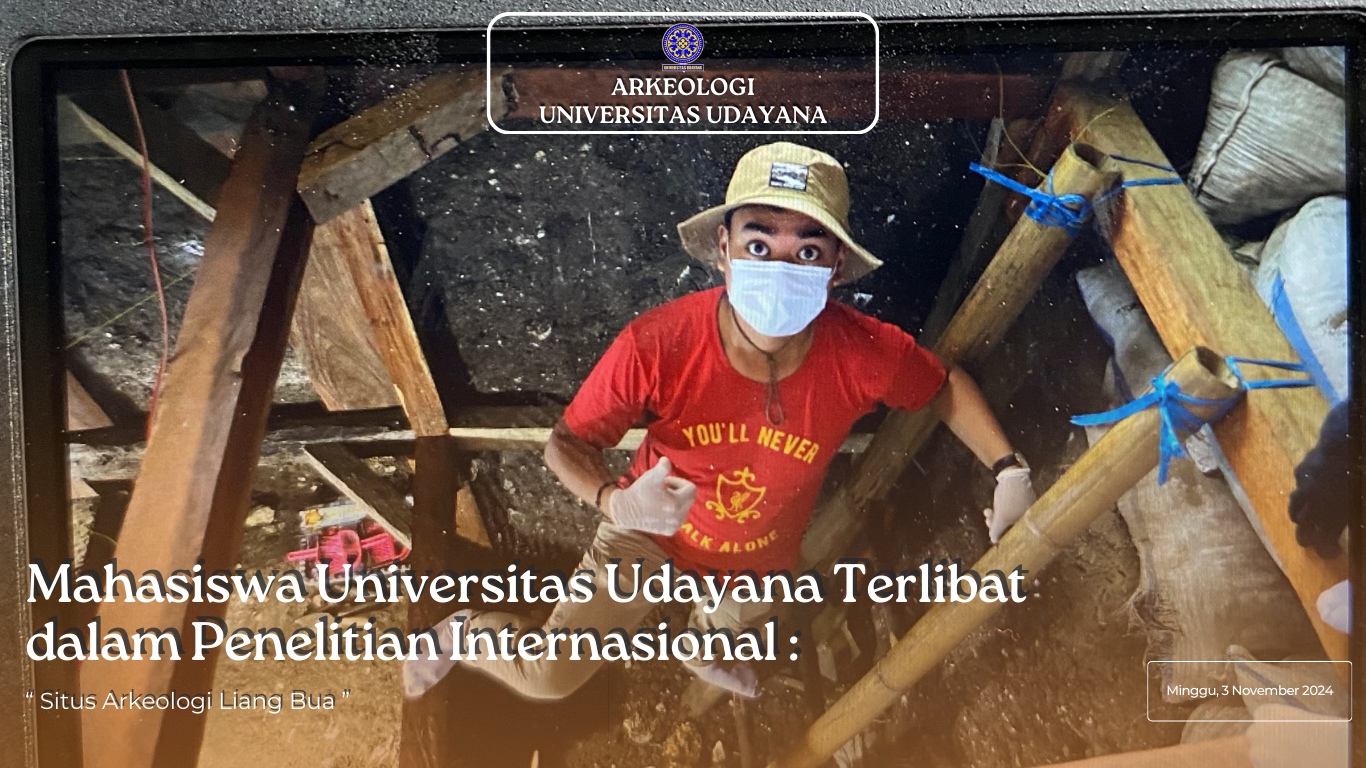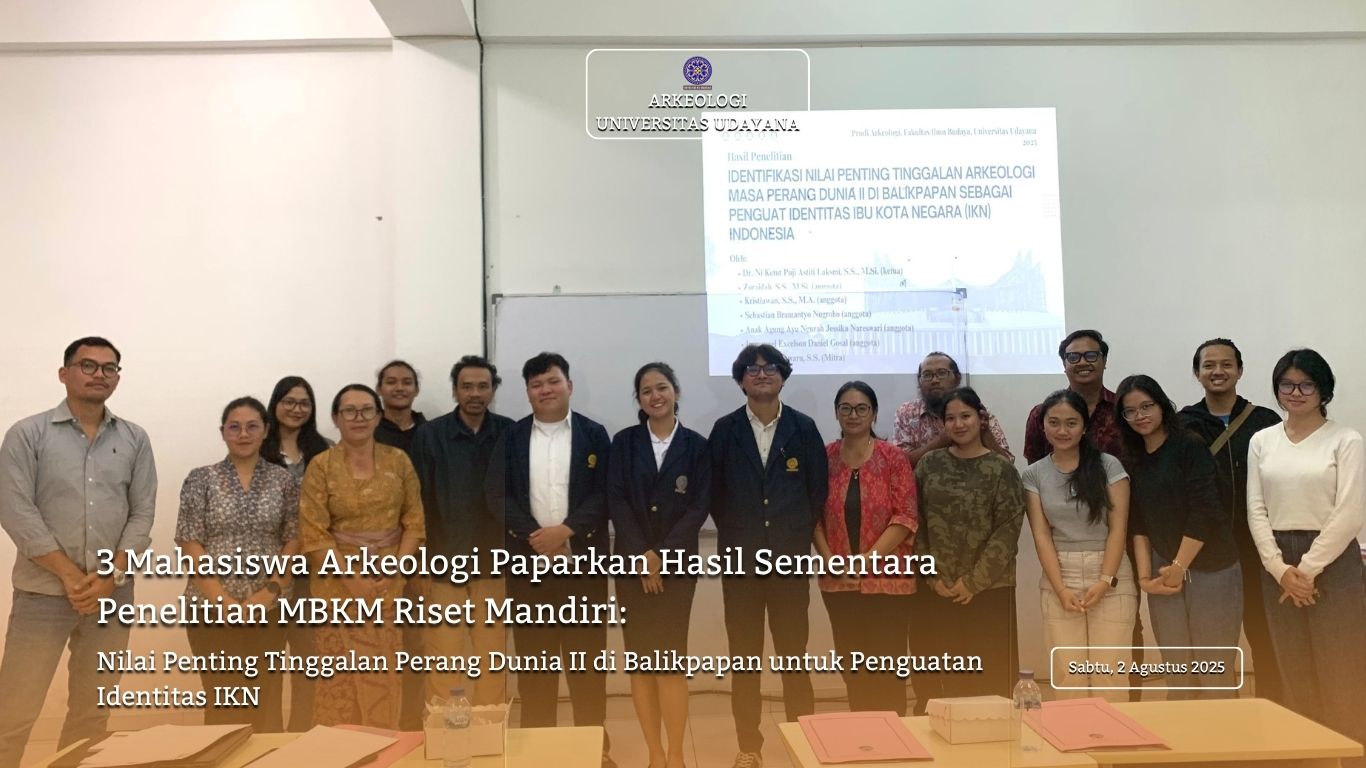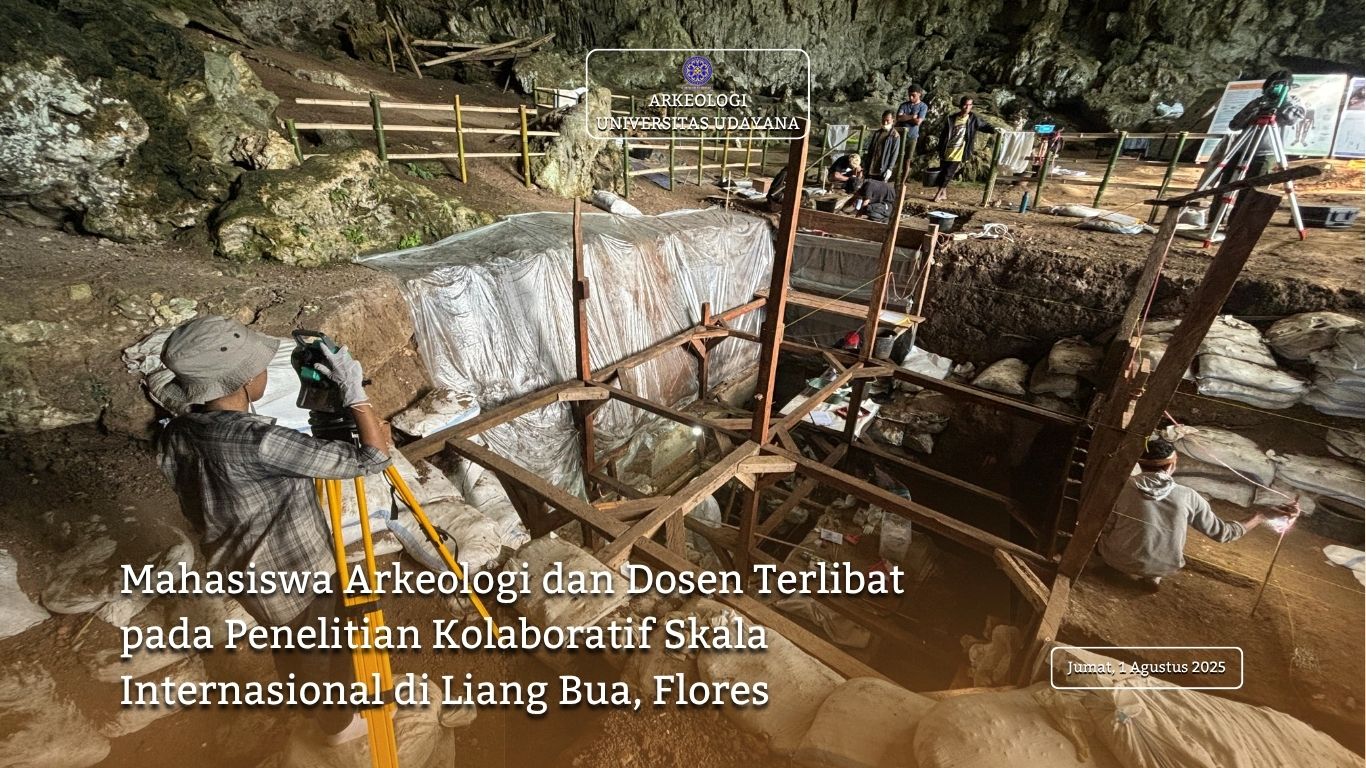Udayana University Students Involved in International Research at the Liang Bua Archaeological Site
Andi Muh. Farhan Alfiansah, an Archeology student at Udayana University involved in the excavation project at Liang Bua in 2024, shares his experience as an excavation box supervisor. His duties include monitoring geological and archaeological phenomena from the various layers of soil being removed. This excavation, which involved local people who had been trained, also focused on detailed documentation to reveal the historical chronology at the site.
This archaeological research is supported by Badan Riset dan Inovasi Nasional (BRIN) in collaboration with Lakehead University (Canada), the University of Wollongong (Australia), the Max Planck Institute (Germany), and the Smithsonian Institution (United States), with the theme "Archaeological Excavations in Liang Bua (Flores, Indonesia) (Continued)
Excavations at Liang Bua officially began on September 14 2024, with preparations underway since the beginning of the same month. Andi took part in this research activity when the research was underway, namely 9 October. This project was planned to be completed at the end of October, but the excavation was successfully completed ahead of schedule, namely on 27 October.
Furthermore, Andi received a direct recommendation from I Made Agus Julianto, S.S., M.Sc. who is a lecturer in archeology at Udayana University
to join Liang Bua's research team in 2024. This recommendation then continued with direct contact from Nico Alamsyah, S.Hum., M.Sc., head of the research team, who provided the opportunity for the student to join the excavation team.
While in the field, Andi admitted that he learned a lot about geological phenomena and archaeological changes stored in each layer of soil. Observing these changes opens up a deeper understanding of past events that may have influenced the geological conditions at the location. He was also responsible for photo-documenting each layer or "spit" that had been removed, as well as digitizing field notes made during the excavation project. One of the technologies used in this process is a total station, which allows three-dimensional mapping of various existing findings.
For this student, his involvement in excavations at this cave site was a new and profound experience. He feels grateful for this opportunity and hopes that this experience can be a valuable tool in his career in the field of archaeology.




FACULTY OF HUMANITIES